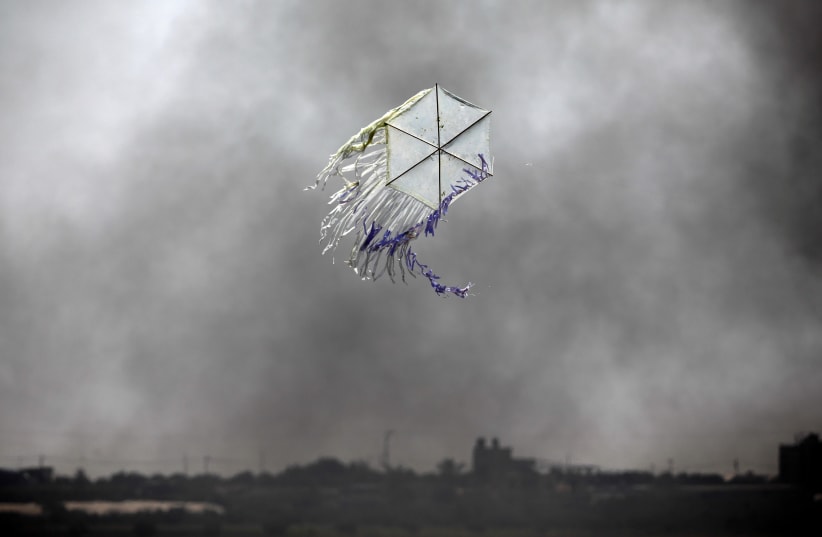On Friday, one balloon bearing the message “I Love You” blocked a main highway in the South for an hour as a police sapper defused the explosive device attached to it.On Sunday, in a clear change of policy, the IDF targeted nine Hamas targets inside the coastal enclave in a response to the launching of dozens of these devices over the weekend, causing at least 40 fires over a 48 hour period.“These are terror[ist] attacks that endanger the residents of southern Israel,” the IDF said in a statement.Education Minister Naftali Bennett on Monday called for the IDF to fire directly at Palestinians launching the incendiary devices, and not to only deter them by firing warning shots.“Explosive kites and burning balloons are not a children’s toy. They are a deadly weapon meant to kill our children,” he said at the weekly Bayit Yehudi Knesset faction meeting, adding: “We must stop shooting near the target and move to shooting directly at it.”But with many of those launching these kites, balloons and condoms, tending to be young children or teenagers, the IDF has so far not targeted any of them. But, if the phenomenon continues and leads to the loss of life in Israel, the IDF may decide to target key adult operatives behind the explosive trend.While Israel’s Attorney-General Avichai Mandelblit refused to comment on the legality of firing at those launching the devices, he said Monday that the incendiary kites and explosive balloons are “legitimate military targets.”Gazans have been protesting along the border with Israel since March 30 as part of what organizers have called the “Great March of Return.”About 130 Palestinian protesters have been killed by IDF fire and thousands more injured.Demonstrators have been throwing stones, Molotov cocktails and rocks toward Israeli troops and flying incendiary kites into Israeli territory, destroying over 10,000 dunams of forest, nature reserves and agricultural fields.Palestinians in #Gaza are using condoms instead of balloons to fly them into Israel with flams. pic.twitter.com/qshOxIhZ0S
— Hazem Balousha (@iHaZeMi) June 16, 2018
From flaming kites to explosive condoms: The new battle with Gazan terror
Latex condoms and helium balloons with IEDs attached are flying further into Israel
